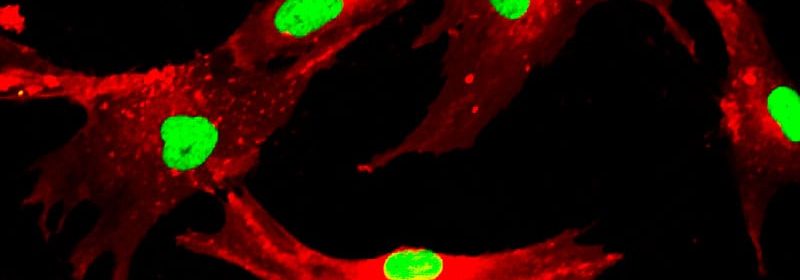Radiolabeled Stem Cells Track to Spinal Cord Injury Site

BARCELONA, Spain — Transplanted radiolabeled mesenchymal stem cells rapidly reached the site of traumatic spinal cord injury with no serious adverse events in people, say researchers who are studying the therapeutic potential of the unproven modality.
In the small early-phase study of people with traumatic spinal cord injury, researchers infused radiolabeled stem cells into the cerebrospinal fluid and tracked their distribution to and retention at the injury site. They found that the stem cells arrived and accumulated at the site of injury by 1 hour after transplantation.
Nuclear medicine physician Luka Lezaic, MD PhD, from the University Medical Centre, Ljubljana, Slovenia, presented the data at the European Association of Nuclear Medicine (EANM) meeting. Lezaic worked with study lead Marko Jug, MD, PhD, from the Department of Trauma Surgery at the same university, among other collaborators.
“People who survive a spinal injury are often left with severe, permanent disability and have very few treatment options,” noted Lezaic. “We want to use stem cell therapy as a way of internally stimulating the spinal cord to regenerate as an adjunct to rehabilitation and prevention of secondary injuries.”
A number of studies have attempted this before, but Lezaic told Medscape Medical News that this open label study in nine patients was different because it was the first to add stem cell labeling and tracking to their development as a potential therapy in patients with traumatic spinal cord injury, including their feasibility and safety.
“Here, nuclear medicine is adding some mechanistic knowledge about the kinetics of how the stem cells behave once injected into the spinal fluid,” he explained.
Valle Camacho, MD, from the Hospital de la Santa Creu i Sant Pau, Barcelona, Spain, moderated the session. “This is interesting work, and I think that for nuclear medicine, it is important to know that the intrathecal injection is well done and that the stem cells arrive at the correct location. Hopefully with further studies, the clinical benefit of the stem cells at the site of spinal cord injury will be established,” she remarked.
Radiolabeled Stem Cells Intrathecally Injected
The mesenchymal stem cells were harvested from the patient’s own bone marrow — specifically from the iliac crest — and their number cultivated and expanded in a laboratory until sufficient quantity (150 million) was reached for infusion. About 5% of the infusate was radiolabeled with technetium (99mTc) exametazime and then introduced intrathecally into the cerebrospinal fluid via a lumbar puncture at the L3-L4 level of the spine.
“Because the patients were paraplegic or quadriplegic, we wanted to reduce the duration and number of images,” said Lezaic, who explained that serial planar and SPECT-CT imaging were conducted at 1, 4, and 20-24 hours posttransplantation to follow the timed distribution of the stem cells as they moved through the cerebrospinal fluid and potentially accumulated at the site of the spinal cord injury.
“Using stem cells, we want to modify the environment at the site of the injury to stimulate the injured spinal cord into regeneration,” said Lezaic.
One Hour to Accumulate at the Site of Injury
The ongoing study enrolled nine patients. All were men aged 19-61 years. Their injuries comprised four of the cervical spine, three of the lumbar spine, and two of the thoracic spinal region.
Serial planar and SPECT-CT imaging revealed that stem cell migration occurred in the rostral direction, with stem cell accumulation typically present at the site of spinal injury at 1 hour postinjection in all but one patient.
Lezaic’s clinical colleagues are following the progress of these patients with controlled clinical examinations in addition to MRI.
“Ultimately, we want to know if stem cell transplantation can really improve function or not,” said Lezaic. “My colleagues are assessing this at predefined intervals. If we do not see any clinical improvement in the patients after this procedure, then we need to consider concluding the study [currently ongoing] as this is a complex and lengthy procedure, and we don’t want to put further patients through this if it is not worth it.”
Of note, no serious adverse events were seen after stem cell transplantation, added Lezaic.
He is working in collaboration with colleagues in trauma surgery and neurology who have a special interest in spinal cord injury and are now following the patients for signs of clinical improvement.
Dr Lezaic and colleagues have declared no relevant disclosures. Dr Camacho has declared no disclosures.
The European Association of Nuclear Medicine (EANM): Abstract #OP-769. Presented October 18, 2022.
Follow Medscape on Facebook, Twitter, Instagram, and YouTube
Source: Read Full Article